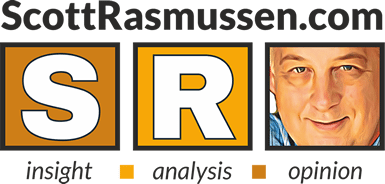
One fact consistently forgotten by political activists is that politicians don’t lead the nation, they lag behind. The culture and technology lead us forward.
A great example is the automobile industry. While regulations have a big impact in the short term, reality is ultimately driven by other factors. For example, when the price of gas falls, people buy bigger cars. That overwhelms the regulatory desire to put people in smaller cars that get better mileage.
Looking ahead, ride-sharing services and the imminent reality of self-driving cars will bring about an even larger transformation.
Today, the typical car is actually in use only about 5% of the time. It will soon be more efficient to share cars rather than keep them reserved for personal use. In other words, rather than having a car parked in the driveway, we might order a car to take us to work in the morning. The car would drive itself to pick us up and take us where we need to go. A different car might take us home. When we head out with the family for a road trip, we might order still another car, something a little roomier.
Not all of us will do this, of course, but most probably will. Sharing rather than buying saves money and hassle. It provides just the right vehicle for the right trip and all sorts of other benefits.
But, while change is good, transitions are hard.
If most of us are sharing cars, there won’t be a need for as many cars. One estimate suggests that car sales could fall nearly in half over the next generation. The ripple effects of the changing car culture will spread far beyond the direct decline in auto sales and loss of those manufacturing jobs. What happens to auto dealers when consumers start ordering rides rather than buying cars? Even the best news will create problems for someone. As auto safety improves, the auto insurance industry will decline. So will the need for tow trucks, auto parts stores, body shops, and other repair services.
It could also bring an end to the public transit industry. Once we are able to order a driverless car to pick us up at any time, why would we need busses and trains? It’s even possible to imagine self-driving cars cutting into the airline business. For shorter distances, working or napping while a car handles the ride may be easier than dealing with the growing inconvenience of air travel.
I know this sounds fanciful to some who can’t imagine Americans giving up their love of cars and driving. But we’ve seen it before. The same sort of transformational change took place more than a century ago when cars replaced horses as the primary means of transportation in America.
It’s impossible, of course, to know exactly how we’ll solve those transition challenges and what this will look like in a generation or so. Fortunately, in a free and self-governing nation, bureaucratic regulators do not determine the future. Instead, decisions are made by unleashing the creativity of countless individuals and organizations to meet the needs of society. The journey may be unpredictable and bumpy at times, but we can take comfort in the fact that the culture leads, not the politicians.
To see the future, look away from official Washington.


